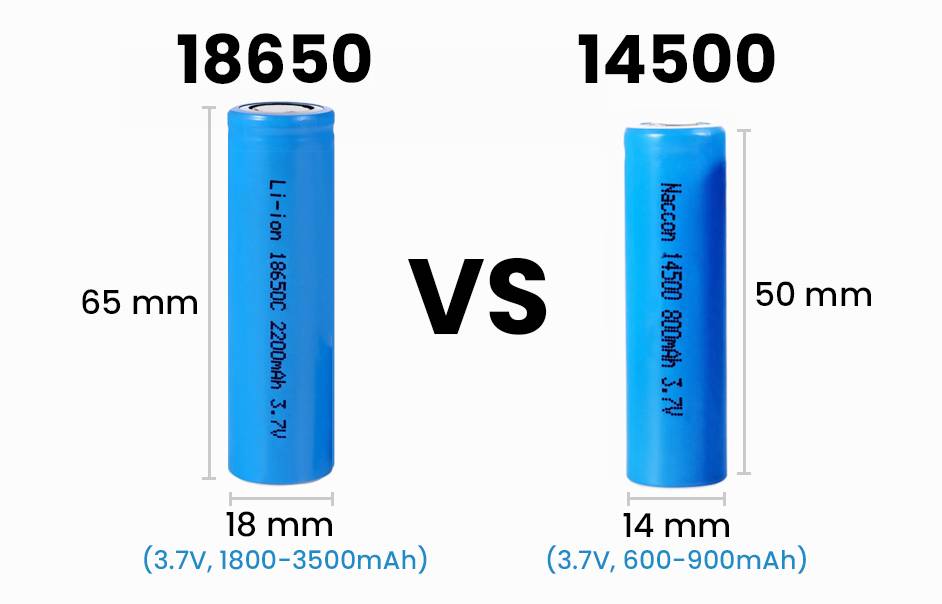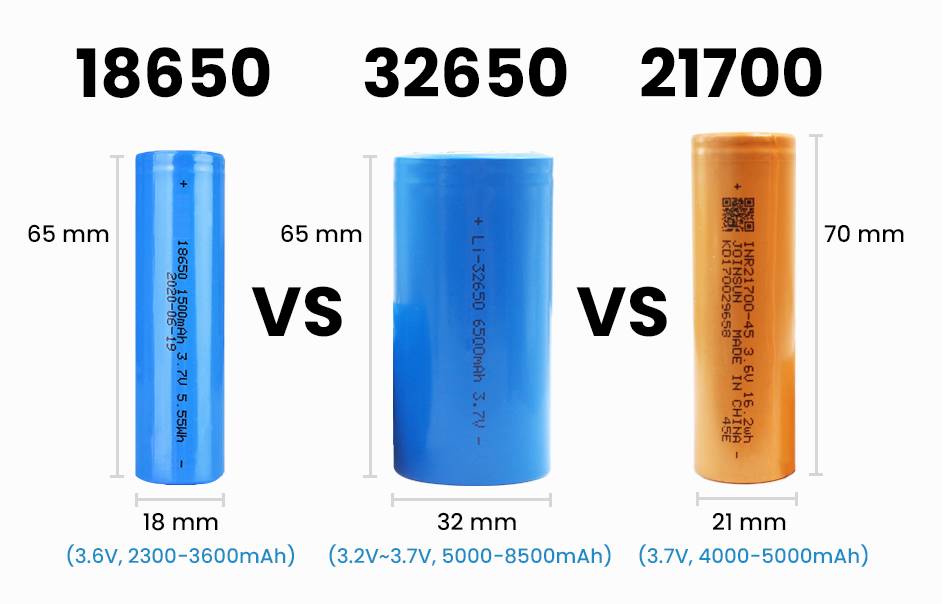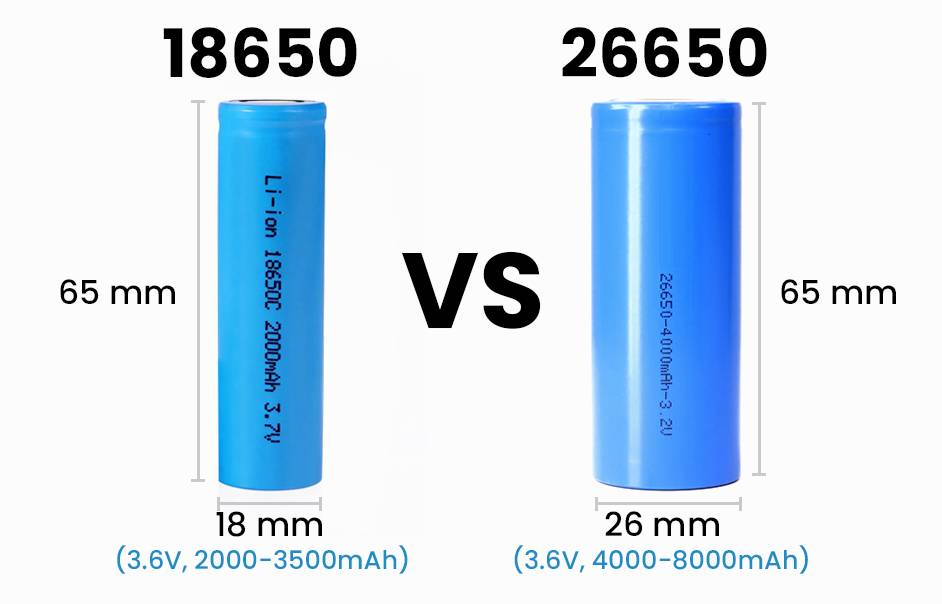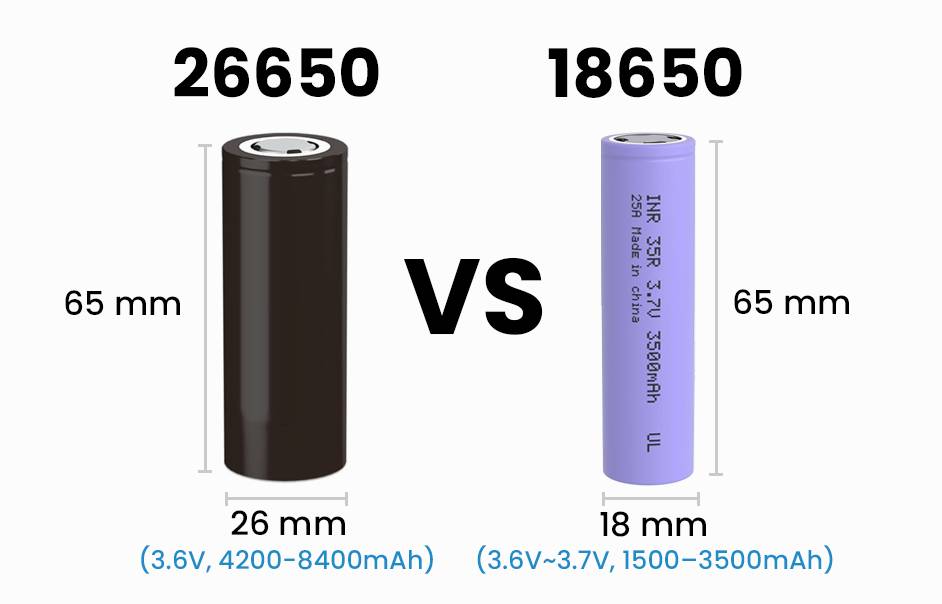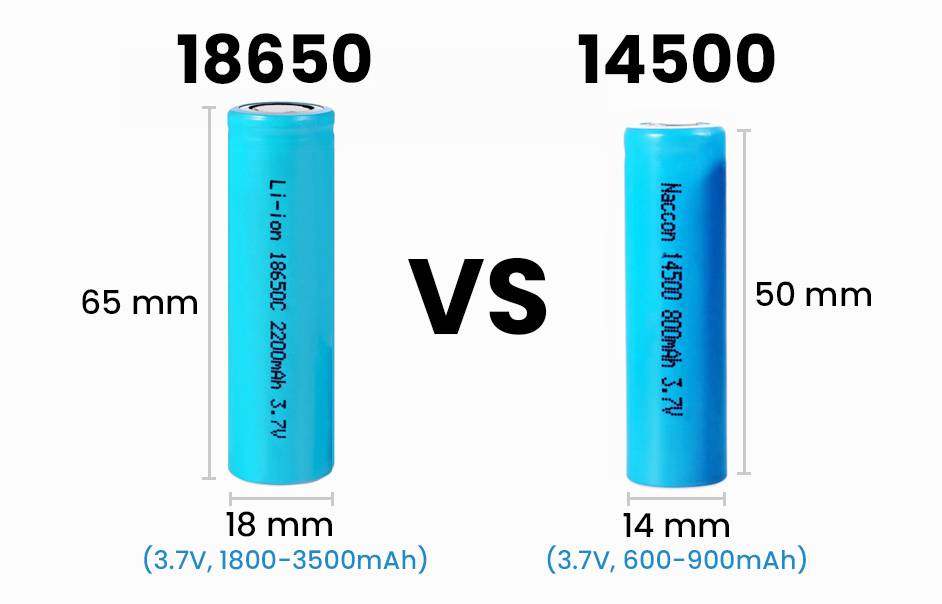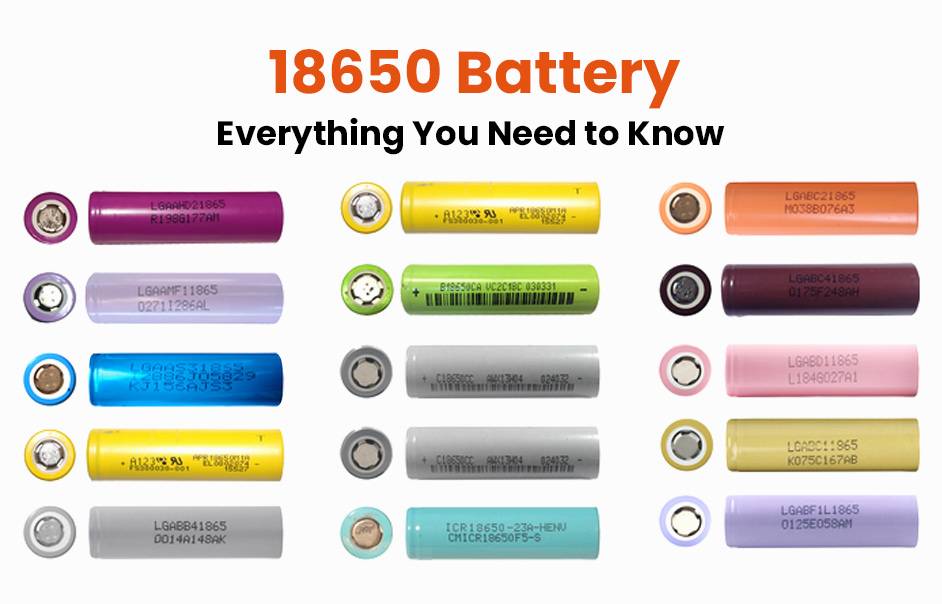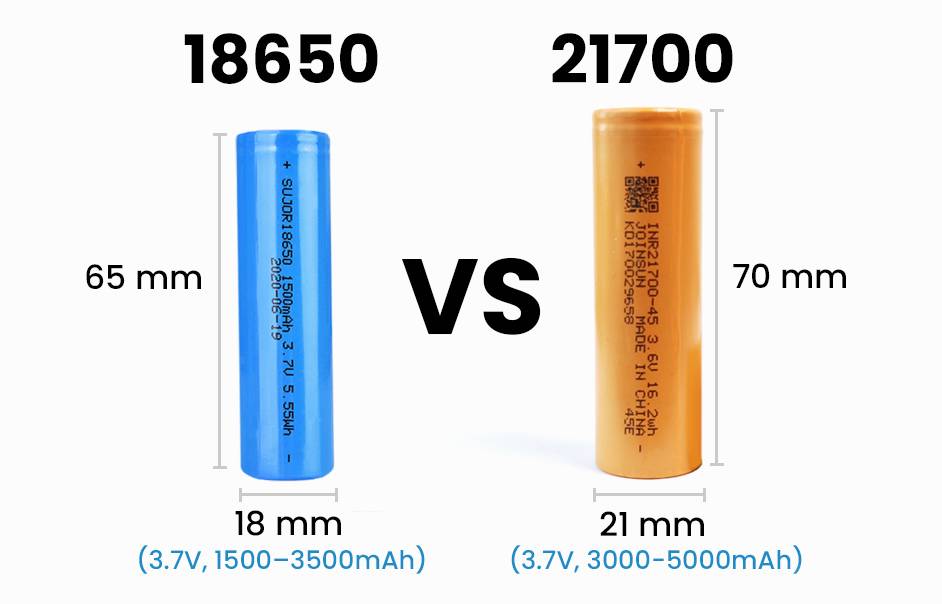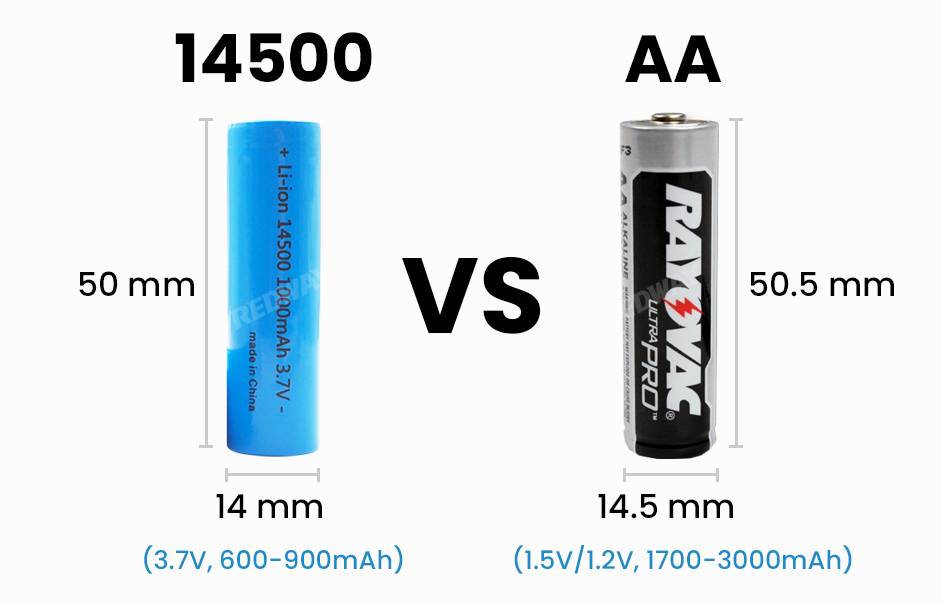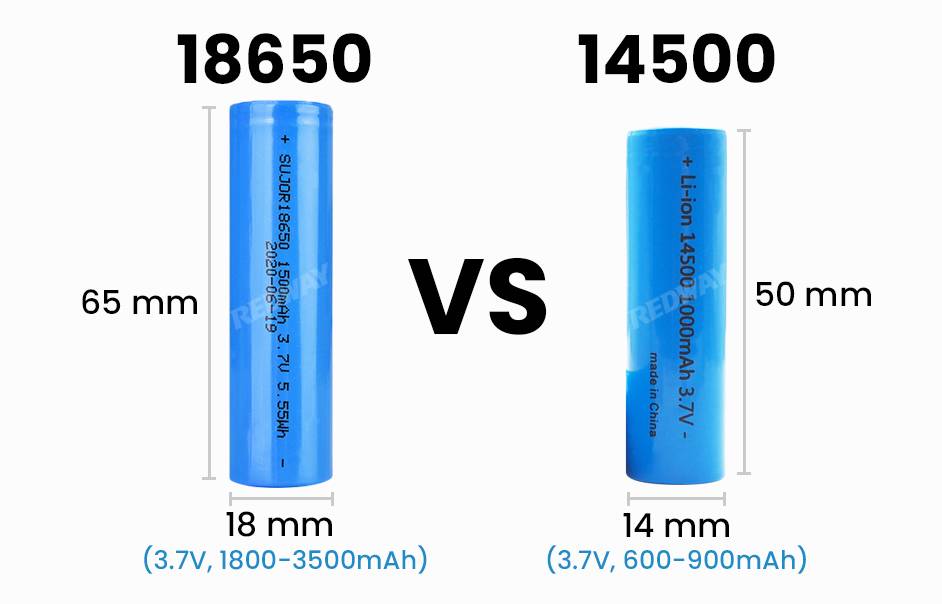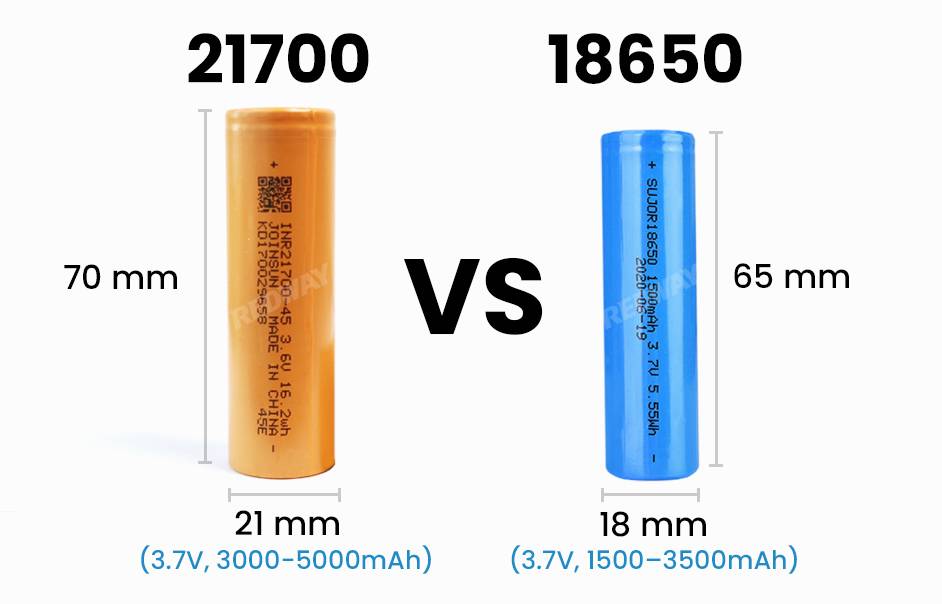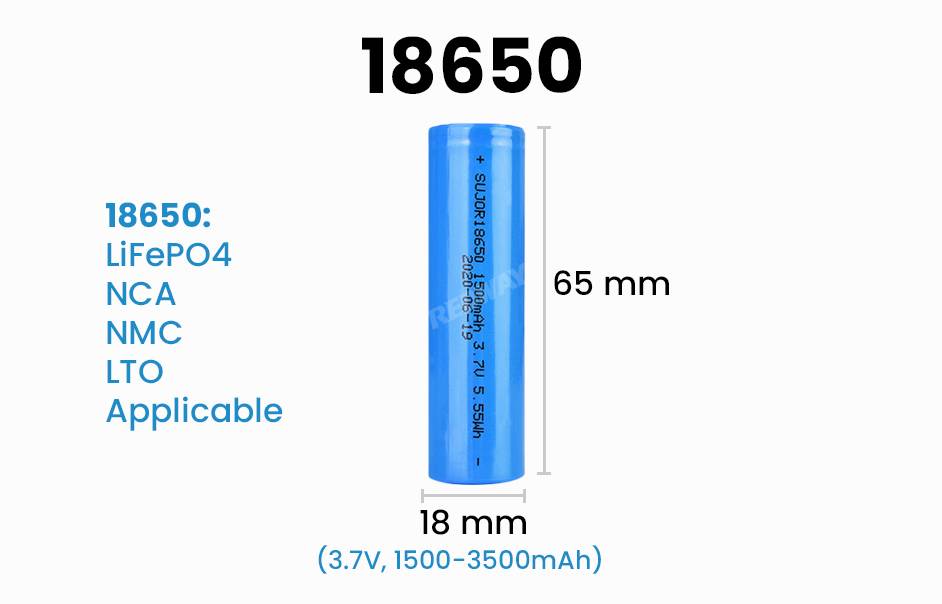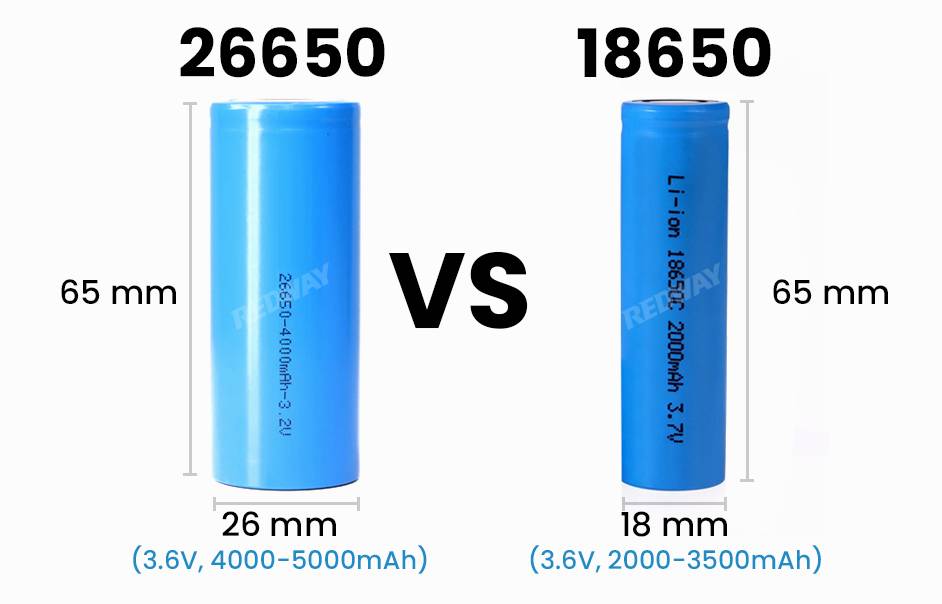Explore the comprehensive guide on 18650 vs 14500 batteries, designed for gadget enthusiasts and tech-savvy individuals. Uncover the differences in size, capacity, and voltage, empowering you to make informed decisions. Delve into the nitty-gritty details for an enlightening journey through the fascinating world of batteries. Grab your favorite beverage and embark on an electrifying adventure to understand these power-packed energy sources.
What Is 18650 Battery?
An 18650 battery is a type of rechargeable lithium-ion battery with dimensions of 18mm in diameter and 65.0mm in length. It has a nominal voltage of 3.7 volts and is widely used in electronics such as laptops, power tools, and electric vehicles due to its high energy density and long cycle life. Handling lithium-ion batteries, including 18650 batteries, requires proper care to prevent safety hazards.
What Is 14500 Battery?
A 14500 battery is a rechargeable lithium-ion battery with dimensions of 14mm in diameter and 50.0mm in length. It has a nominal voltage of 3.7 volts and is commonly used in smaller electronic devices due to its compact size. It features lower energy capacity compared to 18650 batteries.
18650 vs 14500 Batteries in Size, Capacity, and Voltage
In comparing 18650 and 14500 batteries, their size, capacity, and voltage are key factors influencing performance. Let’s break down these aspects for a clearer understanding.
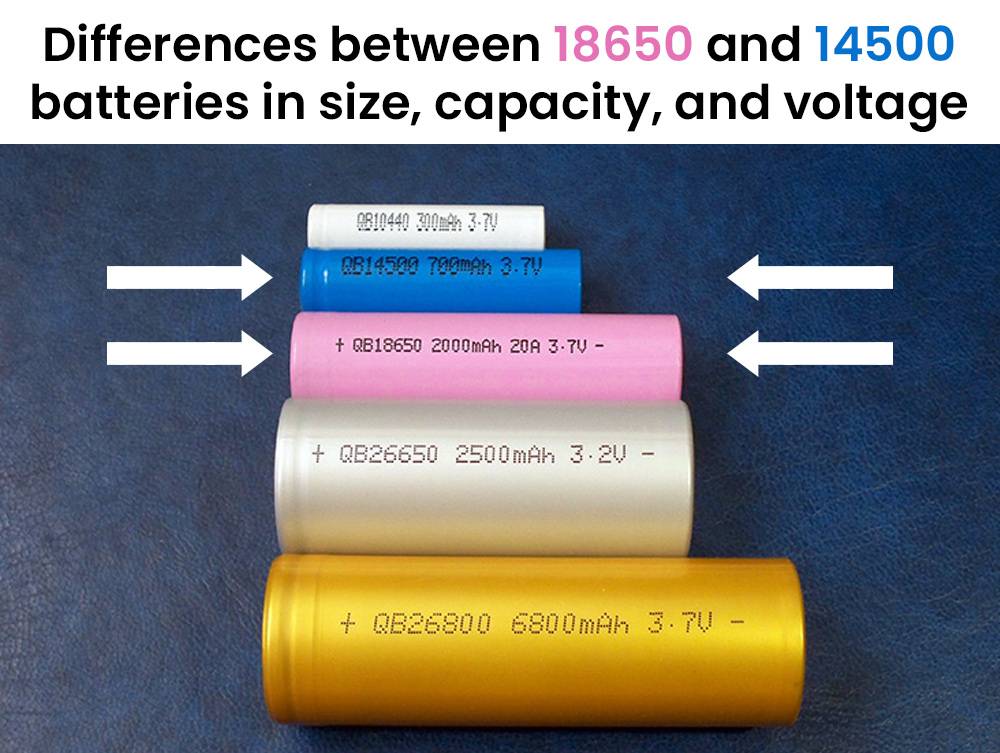
- Size Matters:
- 18650: Larger at 18mm by 65mm.
- 14500: Smaller, measuring around 14mm by 50mm.
- Capacity Considerations:
- 18650: Higher capacity, ranging from 2000mAh to over 3500mAh.
- 14500: Lower capacity due to its smaller size.
- Voltage Variation:
- Both have a nominal voltage of around 3.7V for average discharge rates.
In choosing between these batteries, consider your device’s needs to ensure optimal functionality. The size, capacity, and voltage differences play a crucial role in determining which battery aligns with specific requirements.
Pros and Cons (18650 and 14500 Batteries)
18650 and 14500 batteries serve diverse purposes, finding applications in a broad array of devices. Let’s explore how these batteries power various gadgets and tools.
- Flashlights:
- 18650: Ideal for tactical or professional flashlights with higher output levels.
- 14500: Suited for compact handheld flashlights due to its smaller form factor.
- Vaping Devices:
- 18650: Preferred for extended vaping sessions, providing ample power.
- 14500: Used in smaller vape pens for a more portable vaping experience.
- Electronics:
- Both batteries power portable electronics like laptops, smartphones, and tablets, ensuring reliable on-the-go energy.
- Electric Vehicles (EVs):
- 18650: Incorporated into EV battery packs for efficient energy storage and optimal performance.
- Power Banks:
- Both types feature in power banks, offering a convenient solution to charge electronic gadgets without access to an electrical outlet.
In various industries, these batteries play essential roles, showcasing their versatility in powering an array of devices.
Factors to Consider When Choosing
Choosing between 18650 and 14500 batteries involves considering factors like size, capacity, and voltage. Let’s break it down:
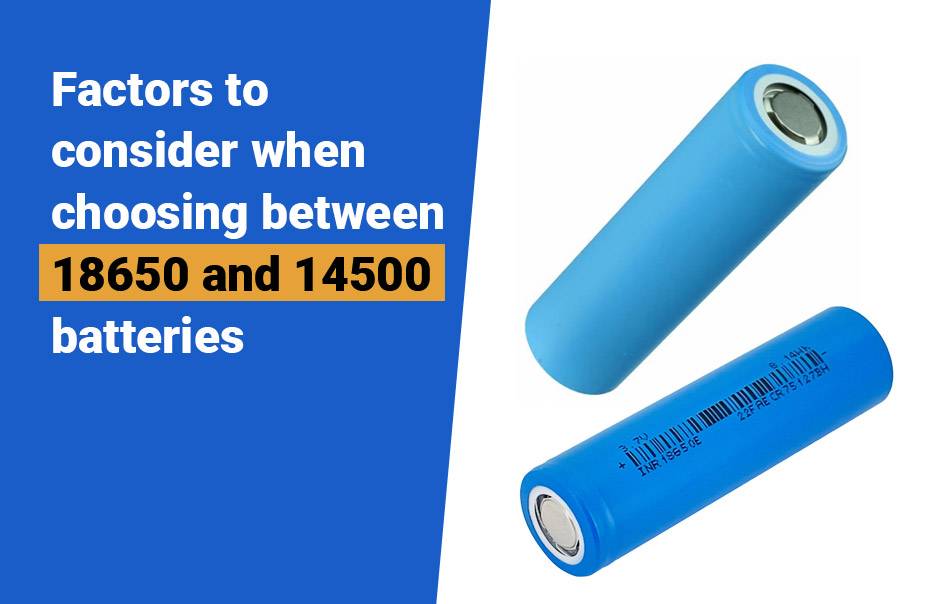
- Size Matters: The 18650 is larger, offering more power but making devices bulkier. The 14500, being smaller, sacrifices some power but ensures a more compact design.
- Capacity Check: The 18650 boasts higher capacity, lasting longer between charges. Ideal for power-hungry devices, it suits applications like flashlights and vape mods.
- Voltage Variation: Note the nominal voltage difference; 3.7V for 18650 and 3.6V for 14500. Verify your device’s compatibility to avoid issues.
Consider your preferences; if portability is key, the 14500’s smaller size may be your choice. Always prioritize safety when handling lithium-ion batteries. In conclusion, understanding these distinctions helps tailor your choice to your device’s specific needs.
Safety Precautions for Handling
Ensuring safety when handling 18650 and 14500 batteries is paramount due to their powerful nature. Let’s break down key safety measures:
- Storage Wisdom: Keep batteries in a cool, dry place away from extreme temperatures and direct sunlight. Avoid storing them with metal objects to prevent short circuits.
- Charge Right: Use chargers designed for your battery type, following manufacturer instructions meticulously. Never leave batteries unattended during charging.
- No Overcharging: Avoid overcharging to prevent overheating, leakage, or potential explosions. Remove batteries from the charger once they reach full capacity.
- Damage Prevention: Protect batteries from water or fire exposure to prevent irreversible damage and serious hazards.
- Dispose Responsibly: When discarding old or damaged batteries, adhere to local regulations and recycle them responsibly at designated collection points.
Remember, mishandling lithium-ion batteries poses risks. Adhering to these safety precautions ensures you can benefit from these high-performance power sources without compromising safety. Stay safe!
How to Extend Battery Lifespan?
Ensuring a longer lifespan for your batteries involves simple yet crucial practices. Let’s break down the key tips:
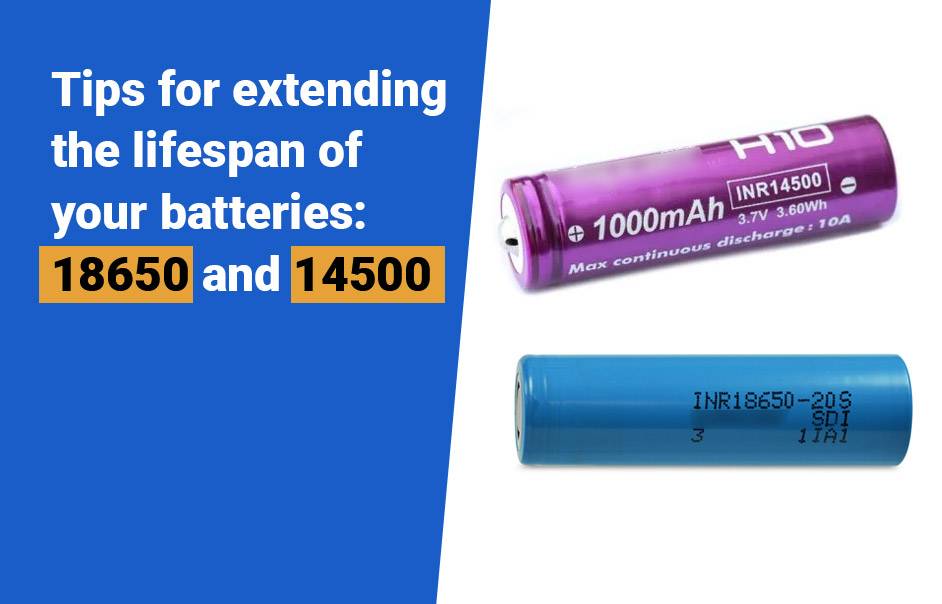
- Storage Wisdom: Keep batteries in a cool, dry place away from extreme temperatures and direct sunlight when not in use. Extreme conditions can impact performance.
- Avoid Deep Discharge: Lithium-ion batteries perform best when kept at partial charge. Try not to fully deplete them before recharging.
- Clean Contacts: Regularly clean battery contacts with a soft cloth or cotton swab dipped in rubbing alcohol to remove dirt or residue that may affect performance.
- Regular Usage: Use your batteries regularly to keep them healthy. Rotate usage if you have multiple sets to prevent any from sitting unused for too long.
- Prevent Overheating: Exposure to high temperatures can significantly shorten battery lifespan. Avoid exposing batteries to excessive heat sources.
Remember these tips to maximize the lifespan of both 18650 and 14500 batteries, ensuring they deliver optimal performance when needed! Stay powered up!
Can a 14500 battery be charged using an AA charger?
How do 18650 and 14500 batteries work?
What are the voltage specifications for 18650 and 14500 batteries?
Which battery type might be better suited for specific applications?
What are the application fields for 14500 batteries?
What are the application fields for 18650 batteries?
FAQs
What are the main differences between 18650 and 14500 batteries?
The primary distinctions lie in their size, capacity, and typical applications. The 18650 battery is larger and has higher energy capacity, commonly used in larger electronic devices. In contrast, the 14500 battery is smaller and has lower energy capacity, suitable for compact gadgets.
What are the typical applications of 18650 batteries?
18650 batteries find applications in various devices such as laptops, power tools, electric vehicles, and high-powered flashlights, where longer runtime and higher energy capacity are required.
What are the typical applications of 14500 batteries?
14500 batteries are commonly used in smaller electronic devices such as small flashlights, portable electronics, and certain types of gadgets that prioritize compactness and portability.
Are 18650 and 14500 batteries interchangeable?
Due to their differences in size and capacity, 18650 and 14500 batteries are generally not interchangeable. Devices designed for one type of battery may not accommodate the other properly.
What are the voltage and energy capacity of 18650 and 14500 batteries?
Both 18650 and 14500 batteries typically have a nominal voltage of 3.7 volts. However, the energy capacity of the 18650 battery is generally higher due to its larger size.
What safety precautions should be taken when handling 18650 and 14500 batteries?
Proper handling and care are essential to prevent safety hazards associated with lithium-ion batteries. This includes avoiding overcharging, short-circuiting, and exposure to extreme temperatures, which can lead to overheating, fire, or explosion. It’s crucial to follow manufacturer guidelines and best practices for battery usage and storage.

